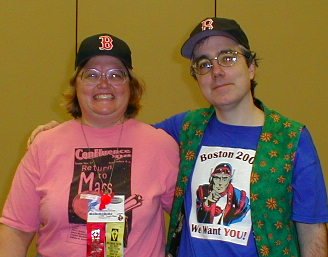Year’s Best SF 11, edited by David Hartwell and Kathryn Cramer
Daryl Gregory is a relatively new writer. I wasn’t very familiar with him, but his story “Second Person, Present Tense” is one of the most effective in the book. It deals with the mechanics of how the mind works and the very nature of consciousness. In the future, a drug, called Z, is developed that detaches what a person does from their conscious awareness of it. The lower-levels of the brain process information, act on it, etc., but the consciousness is left out of it. (This ties in with studies that show that when we make a decision “reach for that cup,” the brain has already sent the message to the nerves before we, consciously, make the decision.) The problem is that, if you OD on Z, the subconscious levels never find a way back to communicating with the former consciousness and a new consciousness – a new person, if you will – takes over. Gregory’s story explores what that’s like, both for the new person herself as well as for her parents as they try to cope with this. It’s a compelling mix of though-provoking (if that’s the right term, in the context of this story) on the nature of consciousness and a detailed examination of the characters and their reactions in such a situation.
Ken McLeod’s “A Case of Consilience” wasn’t on the Hugo ballot but should have been. As the title suggests, it’s similar in concept and a dialog with James Blish’s A Case of Conscience. A devout Scots Presbyterian encounters a huge alien intelligence – a sort of giant subterranean fungus. He faces how to deal with spreading the gospel to this entity. It’s well thought out and brought to a very logical, satisfying conclusion – a worthy partner to the great Blish story.
Cory Doctorow’s “I, Robot,” is the title suggest, also refers to other SF, though it refers to more than the Asimov collection. It also makes nods at such diverse stuff as recent high-tech SF to 1984 (Oceania is at war with Eurasia). The story looks at the futility of trying to put a lid on technological development and, especially in the information age, on information flow. The main character (Arturo) works for the government, trying to keep technology under control, but his wife has fled (defected) to Eurasia, where she works on the kind of tech that was forbidden by her home country. Arturo eventually comes to understand both how useless – and wrong – his job is, as well as the real scope of what technology can do. This one is on the Hugo ballot, and deservedly so.
In Neal Asher’s “Mason’s Rats,” a farmer goes into his barn, looking for his missing cat. He sees a large rat and shoots it, then sees that the rat is wearing a tool belt. Rats, it seems, are evolving intelligence to continue to keep up with humans. An arms race of sorts develops, and the story ends with a nice twist. It’s quite amusing and memorable.
“Lakes of Light” by Stephen Baxter is part of his Xeelee series, and immense and detailed future history that spans hundreds of millions of years. The series is an ambitious and fascinating one, and includes both several major novels such as Ring as well as numerous short stories. “Lakes of Light” is set during the time when the humans are at war against the Xeelee. Scouts are searching the galaxy, looking for lost human colonies to impress them into military service. They find a star that is surrounded by essentially a Dyson sphere, one constructed by the Xeelee for some unknown reason. Humans are living on it, with their communities centered around lakes of light – small imperfections in the otherwise opaque sphere where light comes through. The main character is a missionary, whose job it is to bring these humans back into the fold – whether they want to come or not. The setting is wonderfully done, and the moral questions raised by the story are interesting ones – are the humans justified in drafting those living on the sphere. The story says no, but it does raise both sides enough to make you think about the question.
Other stories include:
- Bud Sparhawk’s “Bright Red Star,” a disturbing story of interstellar war (the introduction places it in the same category as “The Cold Equations,” which is right, but this story is even more disturbing),
- Post-singularity stories by two of the very best short fiction writers of the past decade – James Patrick Kelly and Michael Swanwick. Both are imaginatively strange, and Swanwick’s story – like several other stories he’s written in the last few years – has overtones of Cordwainer Smith.
- A hard SF story about first contact and travel between universes by Greg Benford (called “On the Brane”).
- A Christmas story by Joe Haldeman involving Islam, , a pulp SF magazine, and aliens (“Angel of Light”).
As well as memorable stories by R. Garcia Y. Robertson, Alistair Reynolds, Paul McCauley and others, as well as fine short short stories by Ted Chiang, Greg Bear, Dave Langford and several others.
This is a very good anthology, and proof that there is still a lot of good short SF being published.


0 Comments:
Post a Comment
<< Home